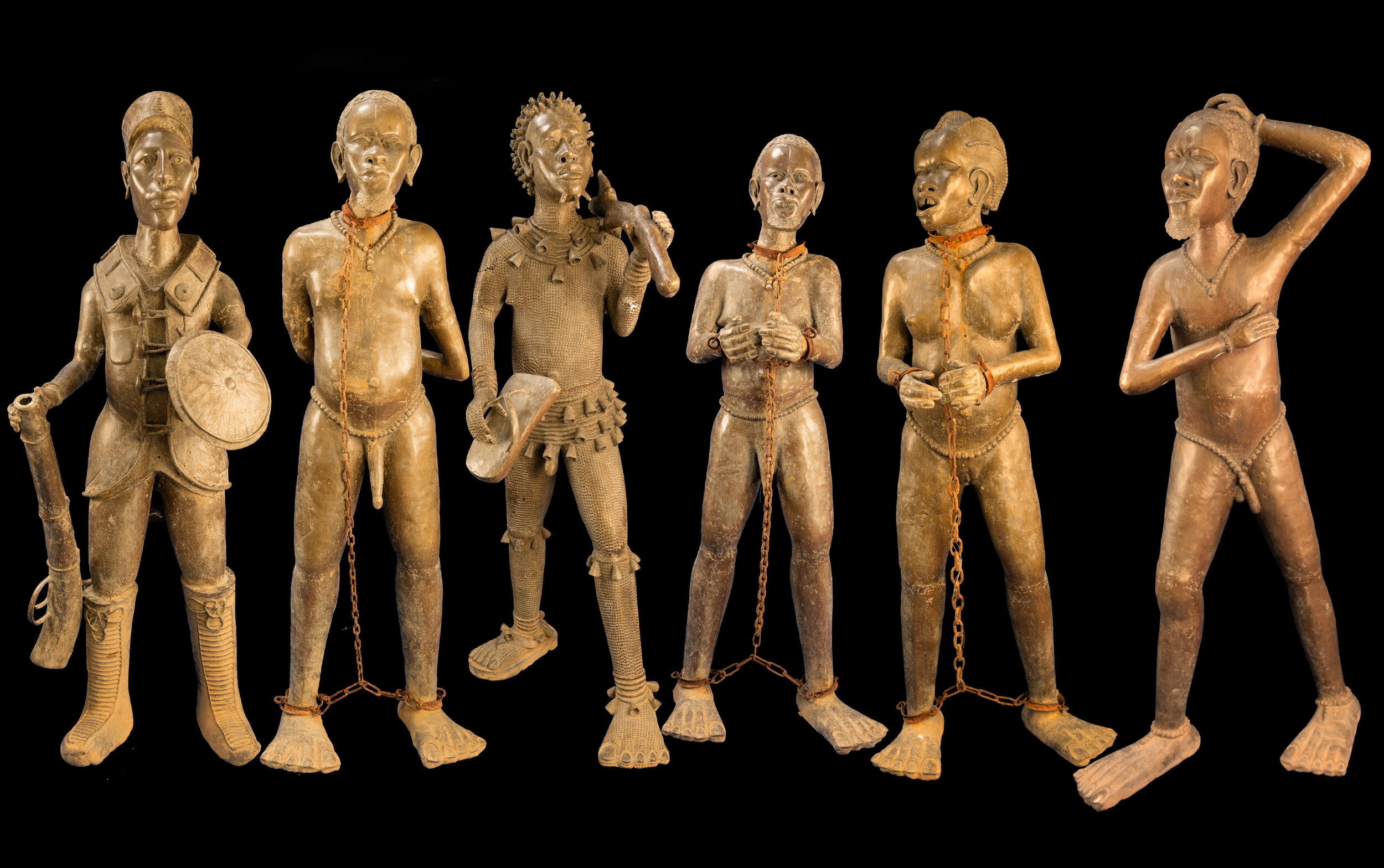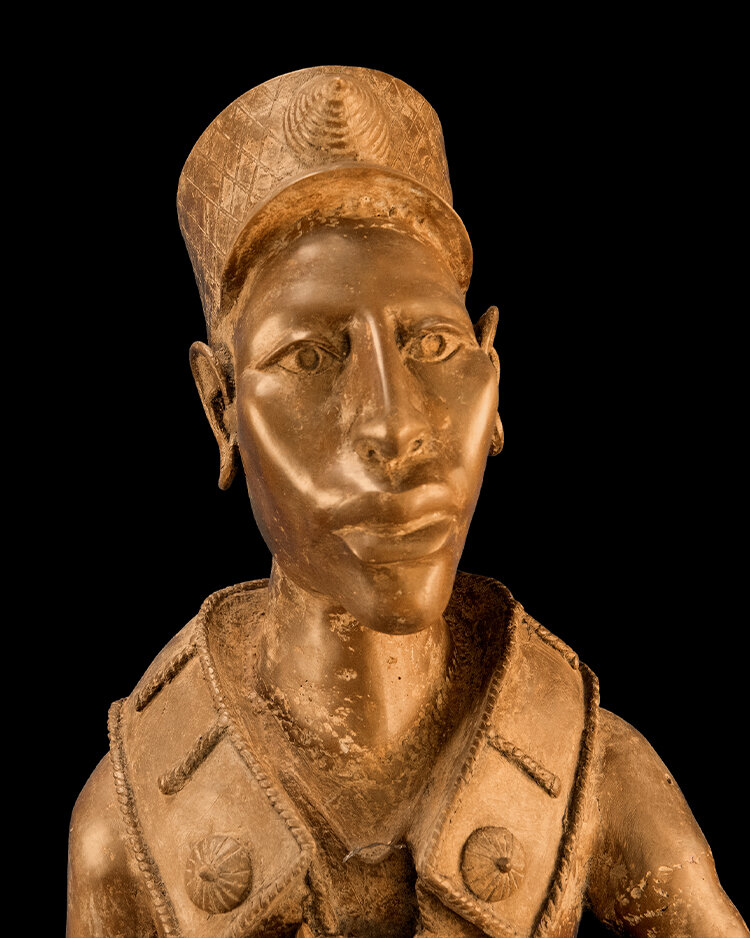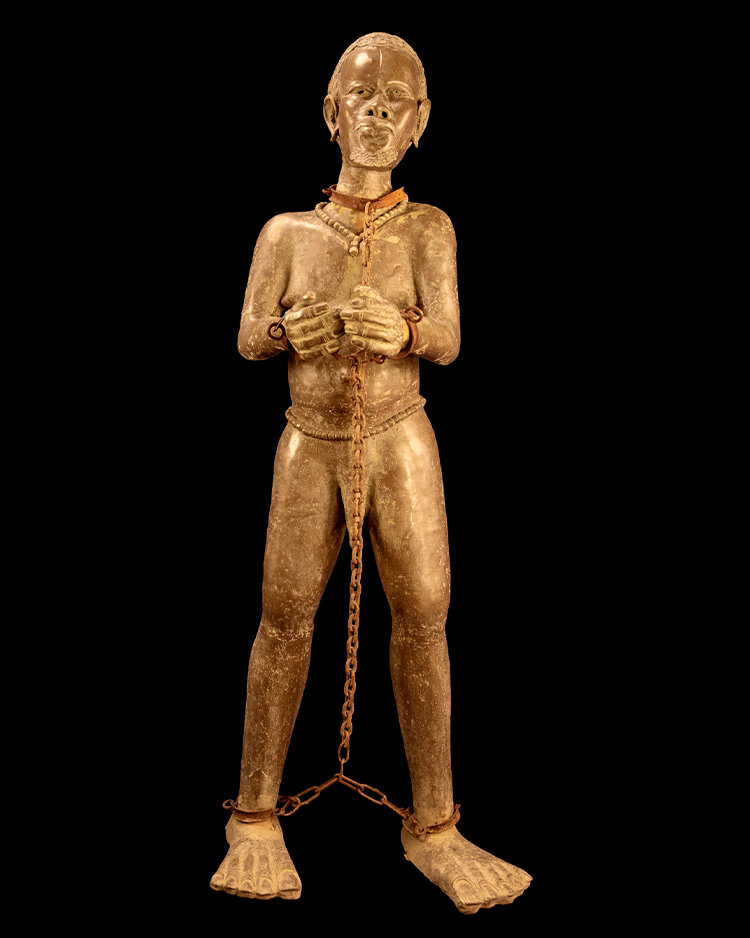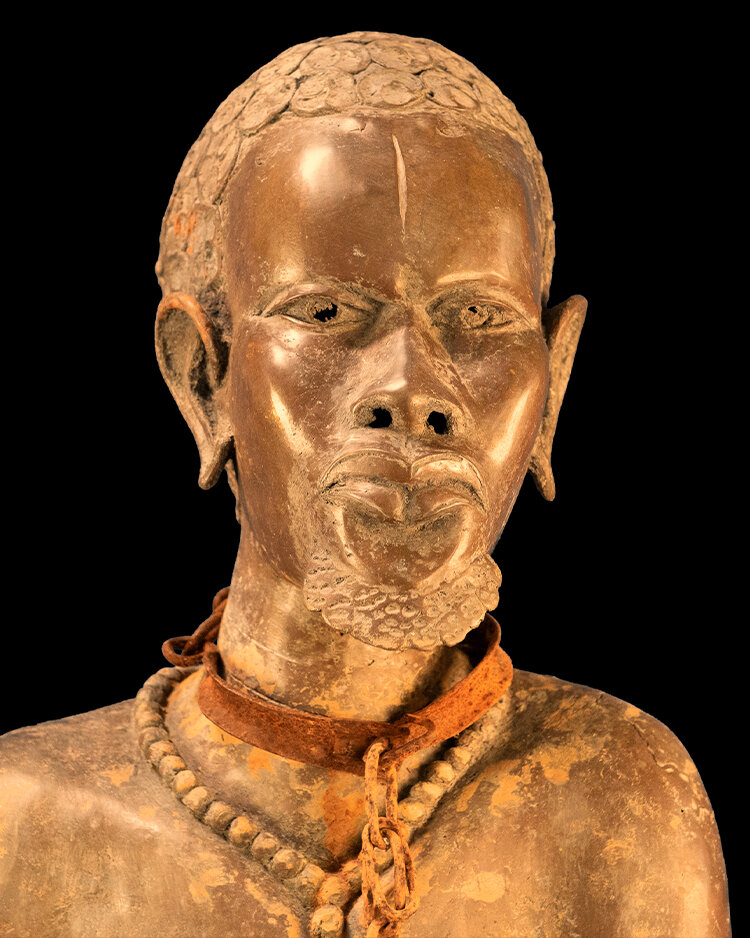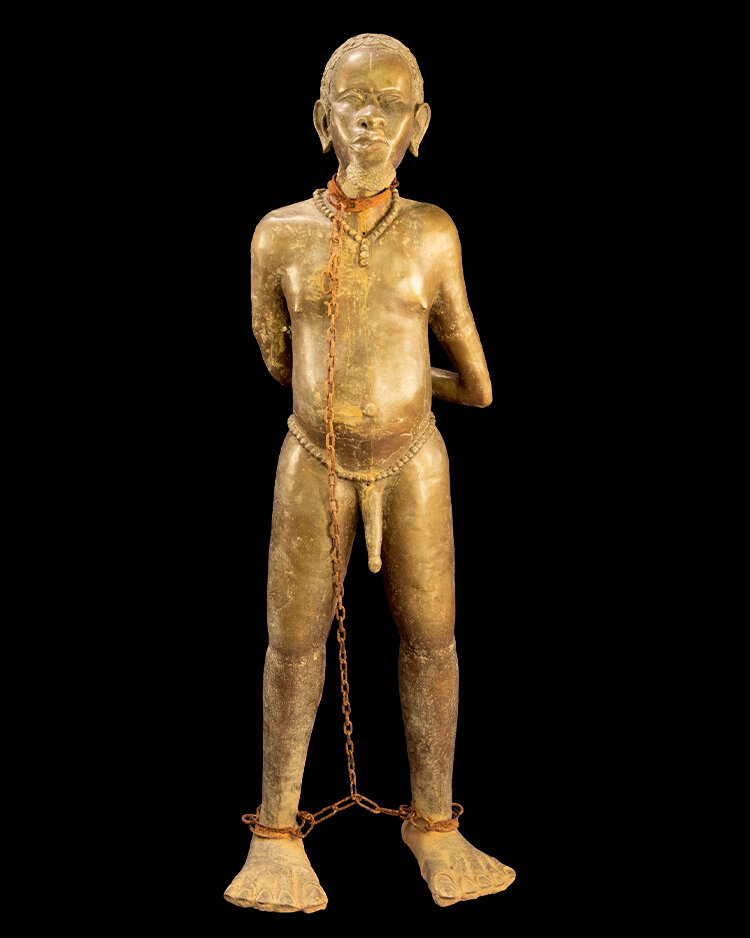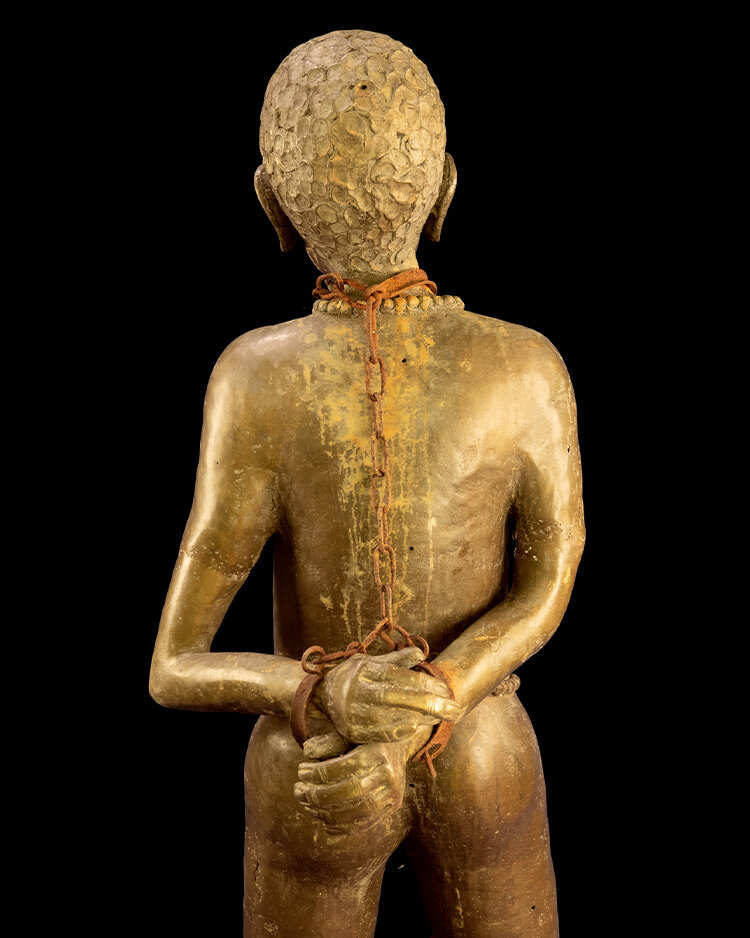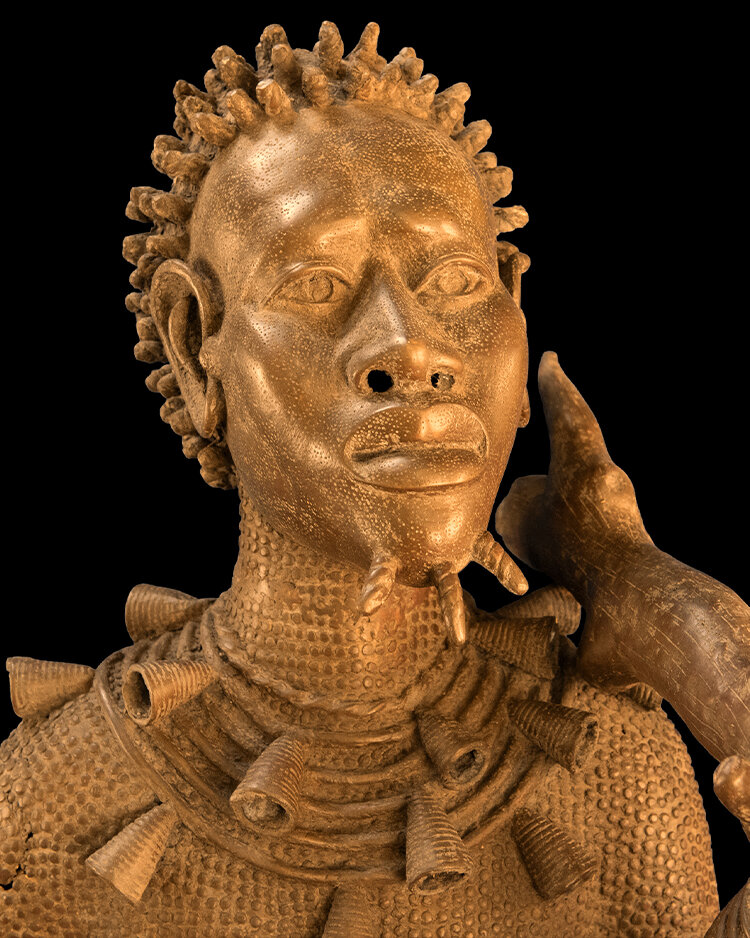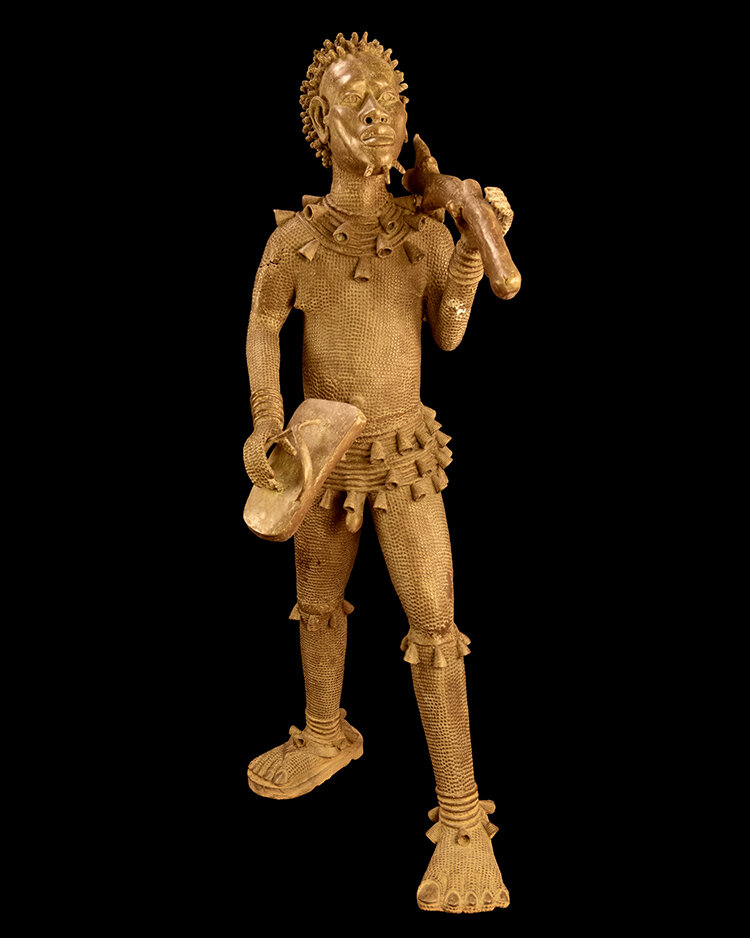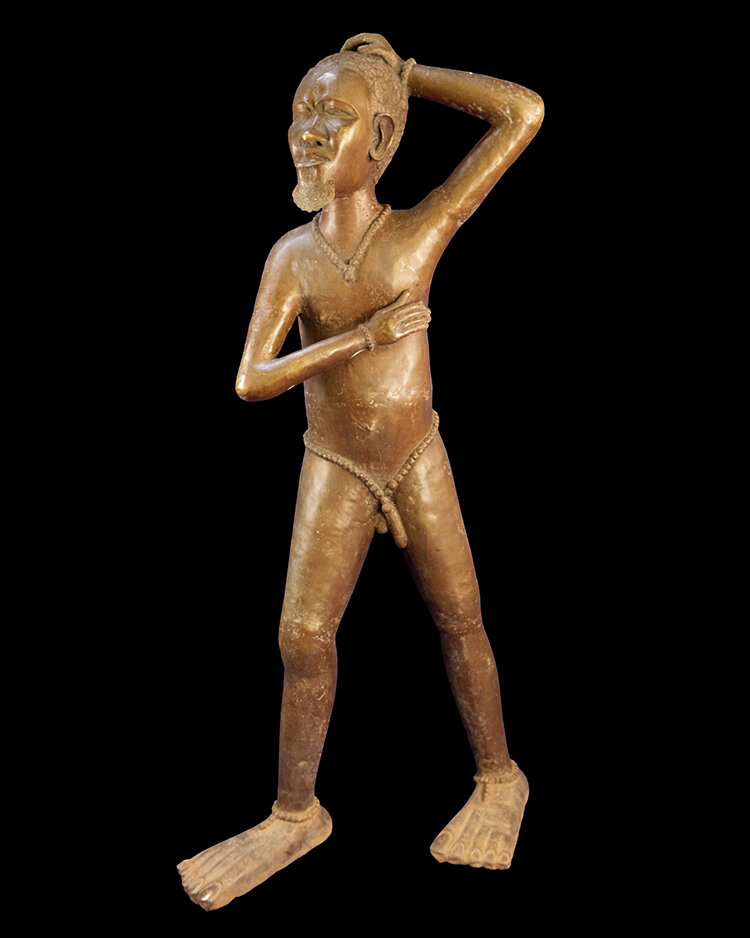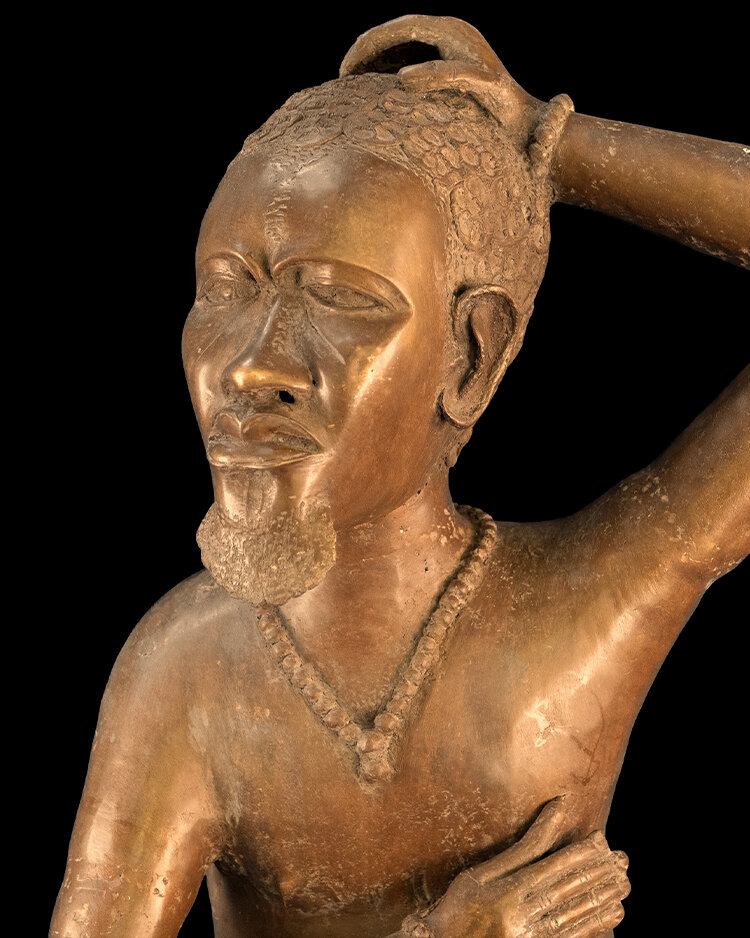The Slave Scene’s six statues, created by Nji Gbetkom Salifou, a Bamoun sculptor from Cameroon’s Grasslands, capture the tragedy of African souls swept up in one of history’s most tragic epochs: the slave trade. The bronze figures take us back to the 1750s when slave traders penetrated deeper and deeper into African villages and kingdoms, separating families, burning villages, and, when necessary, instigating tribal wars to secure enslaved laborers for export to the Americas.
Nji Salifou depicts a scene that played out repeatedly across the African continent for more than four centuries until Portugal—the last holdout—banned slavery in 1869. The sculptor portrays four Bantou hostages being driven by a colonial guard and a royal guard from a neighboring tribe in a grueling march down to a coastal port. There, the captives will be crammed with hundreds of other shackled men, women, and children into the squalid hulls of European ships to begin the infamous months-long voyage to the Americas. Once they have landed, the hostages will work on sugar, coffee, tobacco, cotton, and indigo plantations and mines throughout the Caribbean, Brazil, and North America’s southern colonies, which will later form part of the United States.
The four Bantou hostages, nude and shoeless, are the main focus of this powerful scene. The captives all wear similar wooden beads around their necks, waists, and ankles, which indicate their shared village of origin. The female slave is missing several teeth and bears marks of mistreatment and impoverishment, but she does not hesitate to express her anger to her captors. Overt resistance to captivity has earned her the chains that will deny her return home. The resistance of the two chained males—both in apparent good health and projecting their noble spirit—has forced the captors to bind them in chains until they are turned over to the captain of a slave ship and manacled below deck. The elderly slave is docile enough to travel unbound and expresses bewilderment at his predicament by rubbing his head as he stands before his captors.
